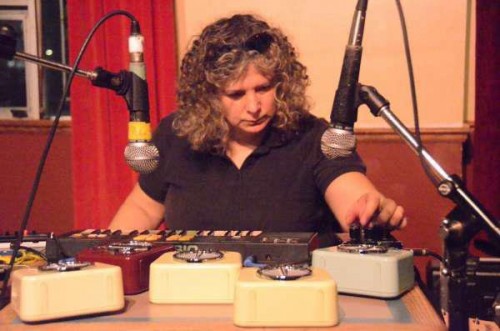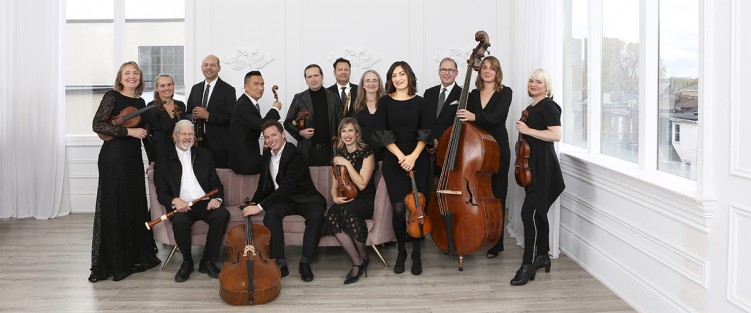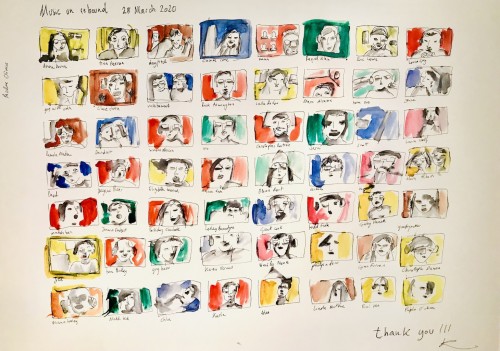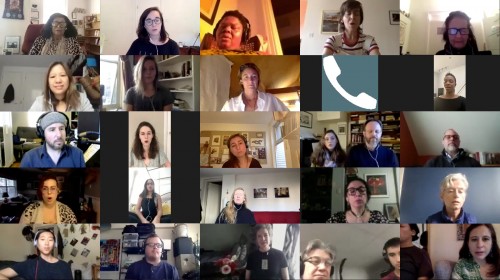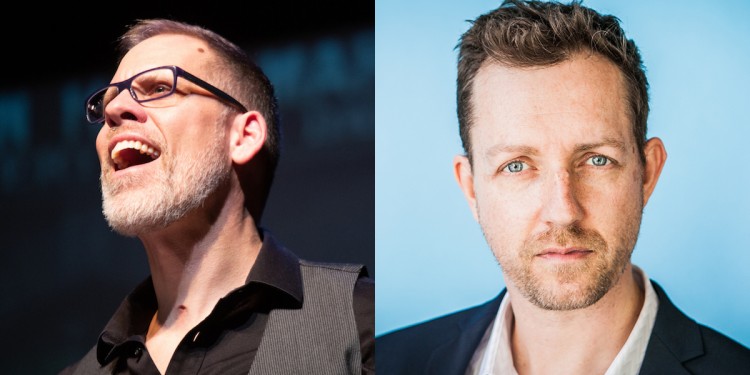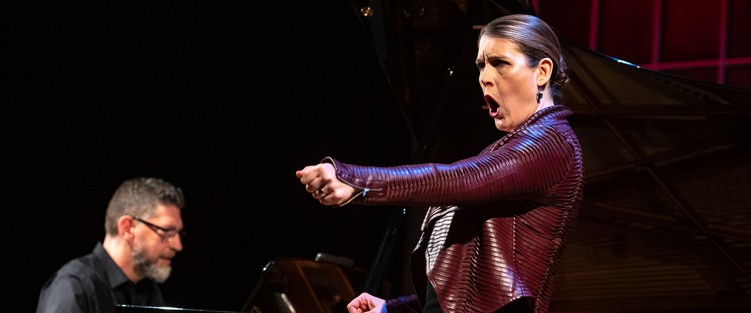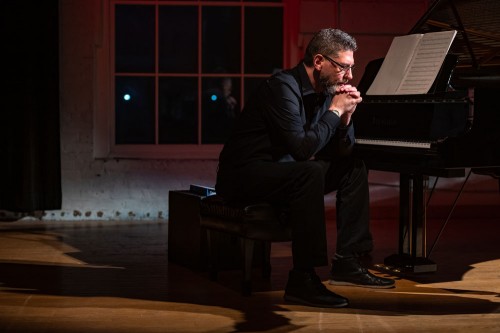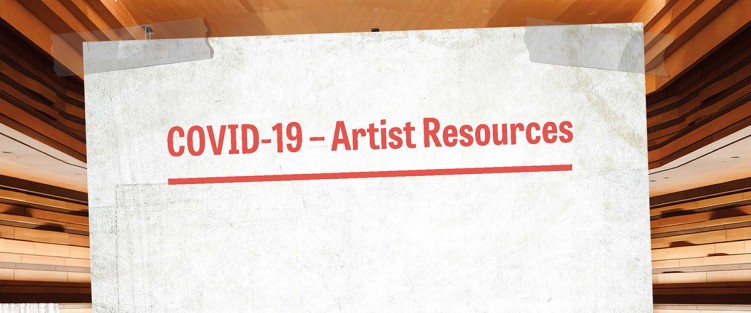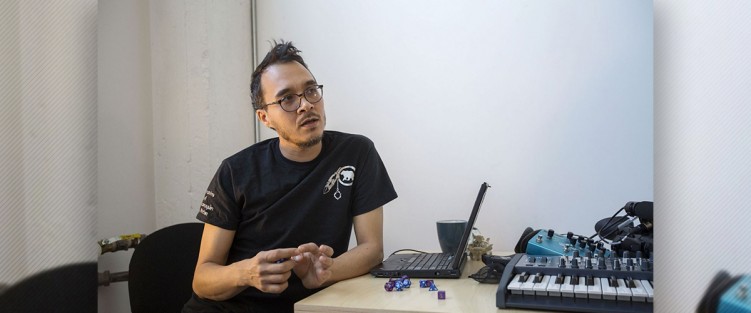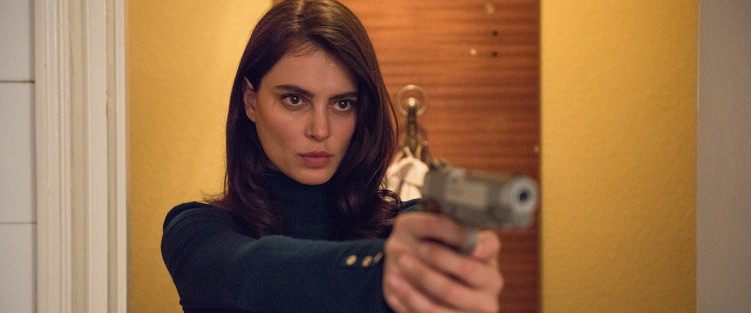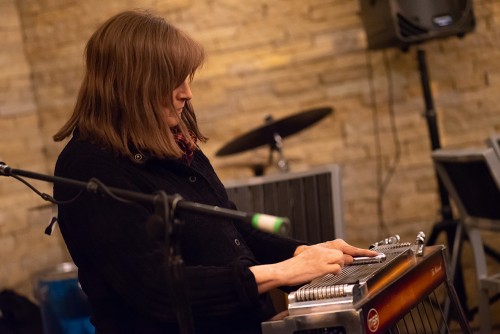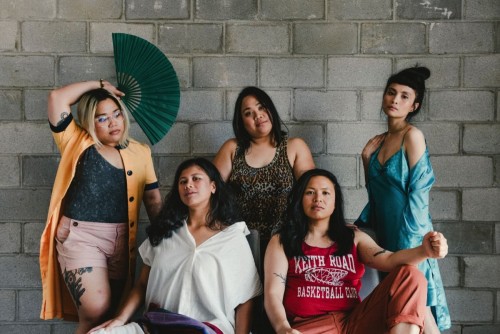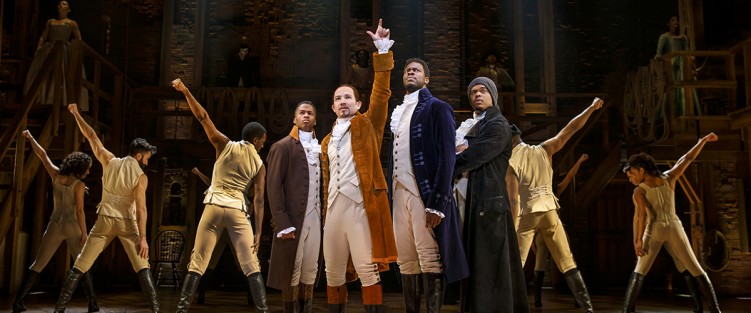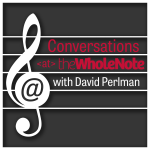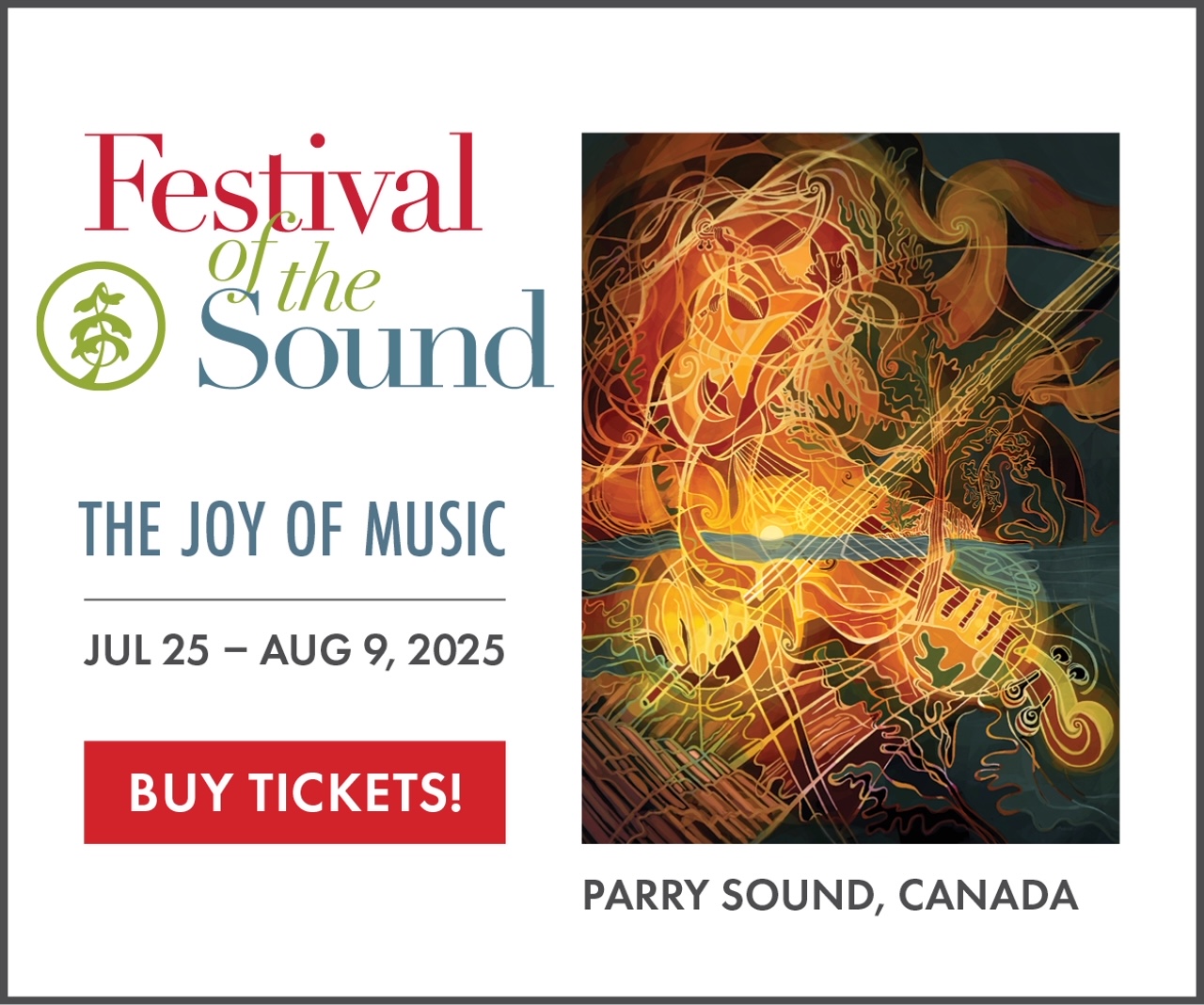Isolating with Array: Arraymusic’s Living Room Talks continue into June
![]()
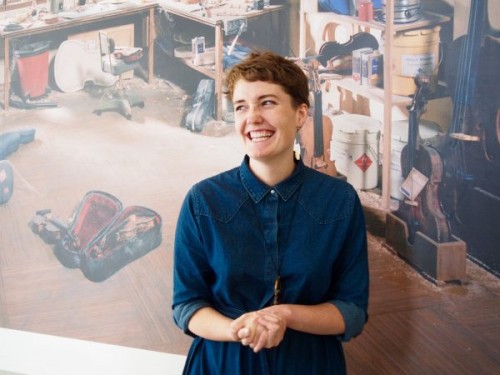 Since concerts have been shut down now for the last few months, various new music organizations have taken to creating alternatives to live performance. In the case of Arraymusic, they have embarked upon a new format for the months of May and June: an online flip-through booklet entitled Array: Living Room Talks - Staying Connected in Difficult Times.
Since concerts have been shut down now for the last few months, various new music organizations have taken to creating alternatives to live performance. In the case of Arraymusic, they have embarked upon a new format for the months of May and June: an online flip-through booklet entitled Array: Living Room Talks - Staying Connected in Difficult Times.
To date, each month has featured a group of composers whose music Array has performed in the past. The booklet contains a link to that performance, along with another link to a recent video conversation between the composer and artistic director David Schotzko. In addition, each composer is featured in the booklet with photographs and quotes about their work. As Schotzko states in the introduction to the booklet, “great music should always be heard more than once.”
The music and interviews with composers Raven Chacon, Allison Cameron, Rebecca Burton and Linda Catlin Smith make up the May booklet, with the first two weeks of June featuring composers Christopher Mayo and Anna Höstman. There are three more interviews/performances to be released: on June 15, June 22, and June 19, featuring the music of John Mark Sherlock, Germaine Liu, and Martin Arnold, respectively.
In order to give a taste of each of the composers profiled so far, I decided to take a random approach to their interviews, “dropping the needle,” as it were, at a specific place along the video timeline. Despite the spontaneous nature of my writing process, I found that each of these transcribed excerpts gave a window into the individual nature of each composer’s practice. Hopefully whatever catches your imagination in these excerpts will whet your appetite to dig deeper into the interviews and listen to the music being spoken about. For each interview, I’ve indicated the spot in the timeline where the transcription begins.
MAY 4: RAVEN CHACON
Raven Chacon: [5:20] “Back three hundred years ago in early America… there weren’t any of the sounds that are always in our subconscious from this sonic environment that all of us in the 21st century live in. Of course things were more quiet then, but there were more world views associated with sound. One of them was that when it was storming outside… it wasn’t the lightning that was going to kill you, it was the thunder that was going to kill you. Maybe the thunder being the voice of God instead of the actual electricity of the lightning.”
MAY 11: ALLISON CAMERON
Allison Cameron: [10:17] “The idea was that I didn’t want them [performers Nicole Rampersaud and Germaine Liu] to be stuck in it [reading notes from a score] and them thinking, “oh, I’ve got to read this music of Allison’s this way.” They still had to do that, but not in a way that limited what made their sound their sound. That combination of things is what was interesting in the first place, of mixing with Arraymusic… It’s the way you guys [Arraymusic] come about your musical sound. It’s a different way of doing it and pursuing it.”
MAY 18: REBECCA BRUTON
Rebecca Bruton: [12:40] “When I listen to one section of a work, how does that section change based on what I’ve heard before and then based on what I hear after it… How specifically can a song act on the ears in a different way and how can I disrupt expectation in a song format? The moment I bring in a singer, which I did – the violinist was singing in it – then I think you listen in a certain way, but how can I maintain that formal approach while still having lyrics?”
MAY 25: LINDA CATLIN SMITH
Linda Catlin Smith: [17:18] “One of the things I remember talking to Rudolph [Komorous] about after I finished school and had moved to Toronto, and I was a bit lost… I asked him, “What do you think is coming up, the next thing that music is going to focus on?” And he didn’t bat an eye and said “melody”. I hadn’t been writing melodic music much, but when I think about it, some of us have moved into a more melodic way of thinking about things.”
JUNE 1: CHRISTOPHER MAYO
Christopher Mayo: [10:15] “The spiraling out of control really became the process of finding the photographers I wanted to interview. I don’t know a lot about photography, I don’t know photographers. I’ve actually written a lot of pieces about photography… I don’t know why I return to it as a topic for pieces… I was doing research on the internet to find people who were representative of photography in Canada… and finding people who were willing to either record themselves or have me come and record them.”
JUNE 8: ANNA HÖSTMAN
Anna Höstman: [19:23] “You’re having to go back and forth between these two perspectives and at a certain point be able to allow them to speak to one another. Some of those relationships come very easily and quickly, and others are a little harder. It’s a unique thing that you are learning this process of going back and forth and coming up with something that’s completely new out of that giving of yourself to that experience. I find pieces with text the hardest for me, but I find them the most rewarding in the end.”
Arraymusic’s initiative gives us another window into future possibilities for alternative ways of listening and engaging with new musical ideas and directions. Now the question will be to design ways in which new performances of new works can be heard as well. Perhaps live concerts will return sooner than we think, but a corner has been turned in approaching concert life in new and innovative ways, and the various experiments undertaken by different artists and presenters will, I’m sure, be part of the changing sonic sphere.
Arraymusic’s “Living Room Talks” series is accessible as monthly online booklets. You can access the May booklet here and the June booklet here.
Wendalyn Bartley is a Toronto-based composer and electro-vocal sound artist. sounddreaming@gmail.com.


